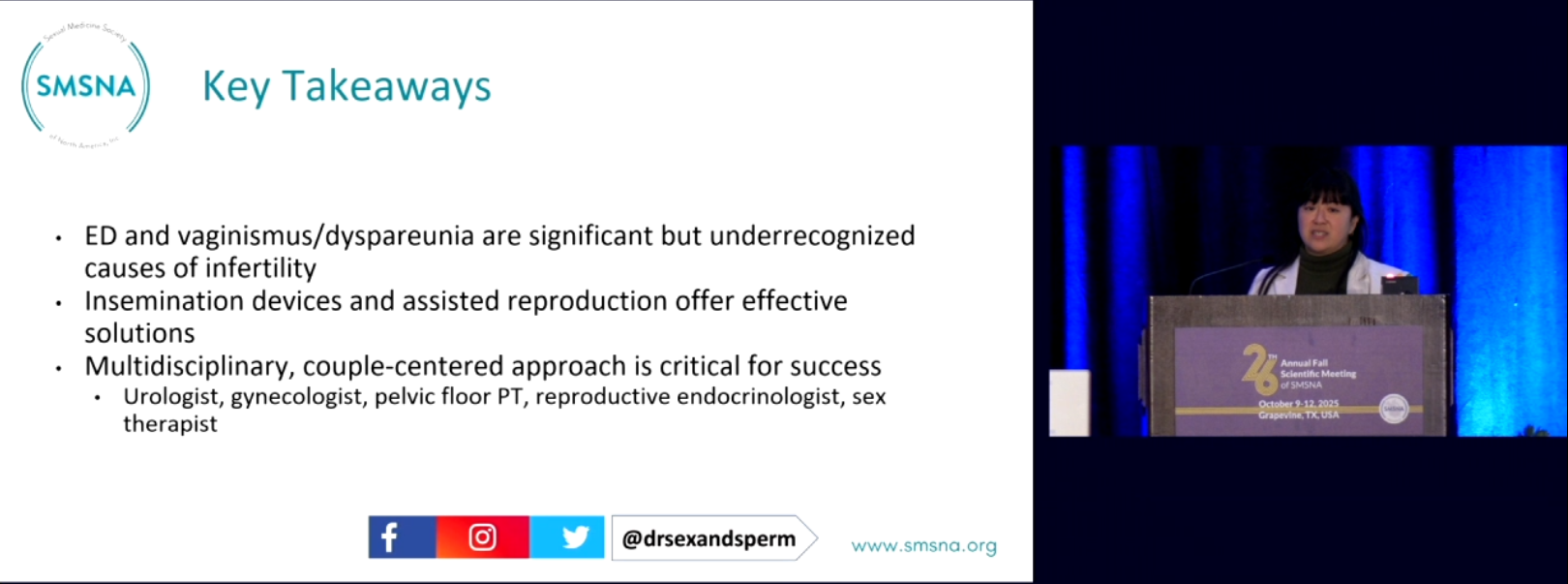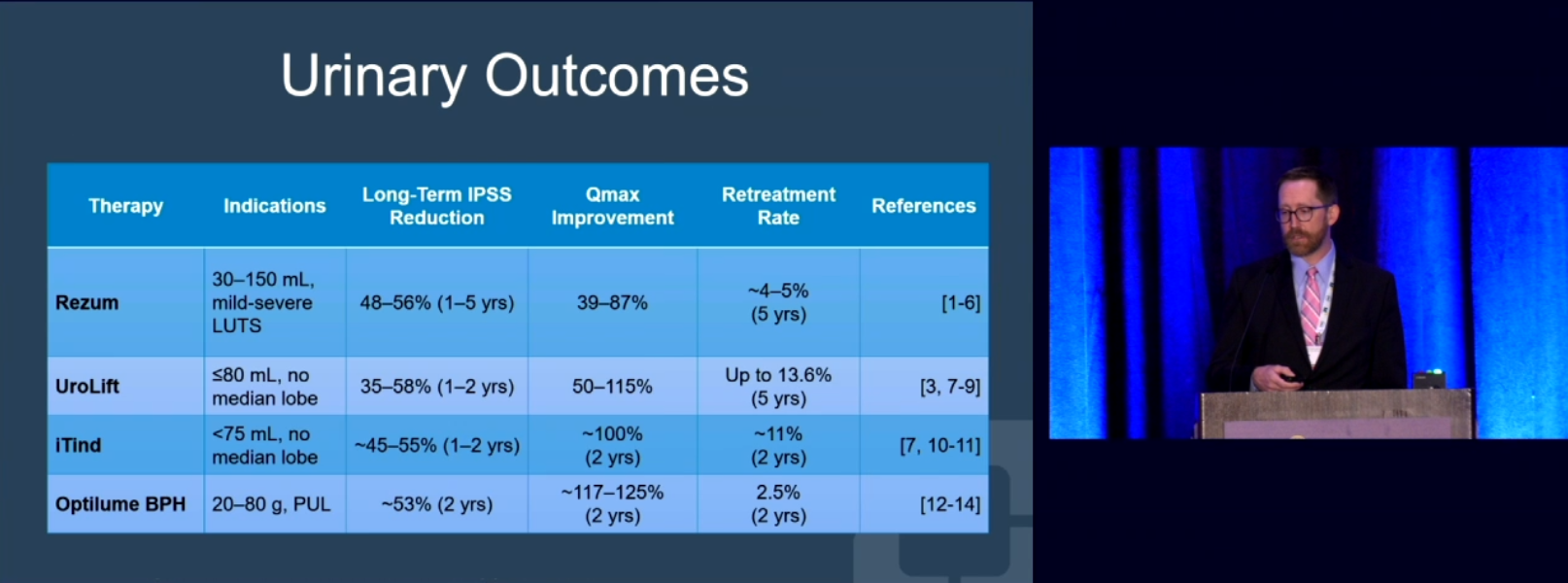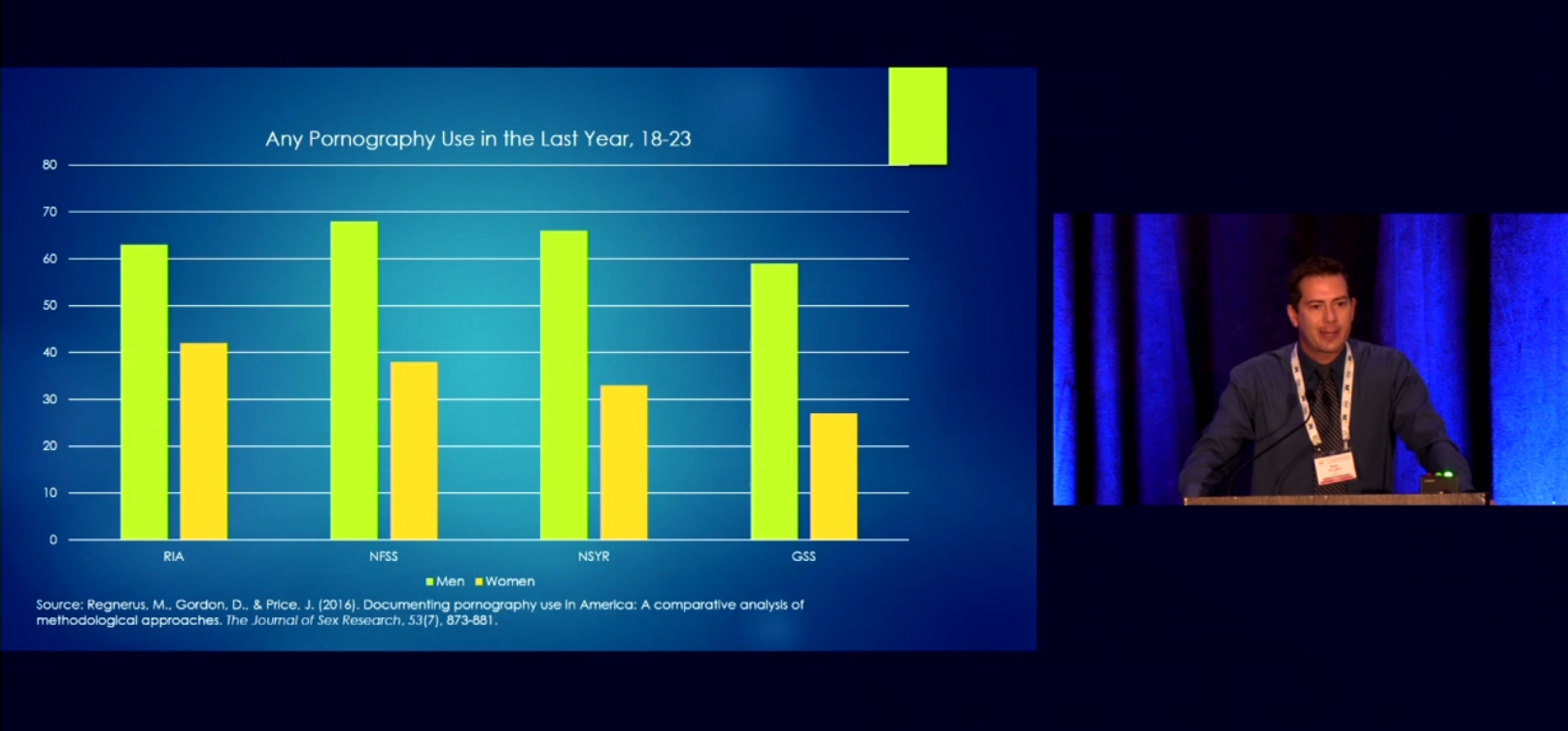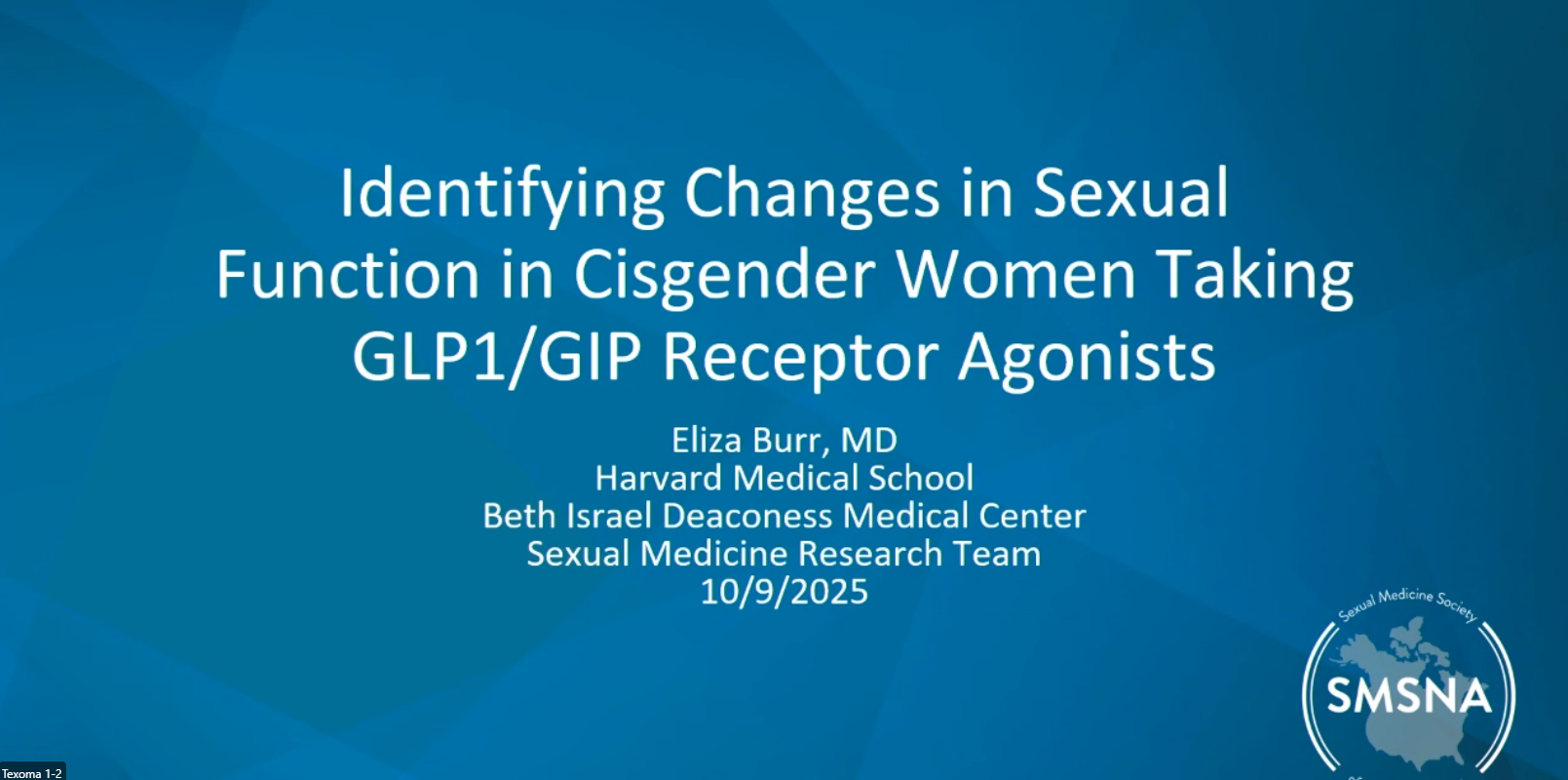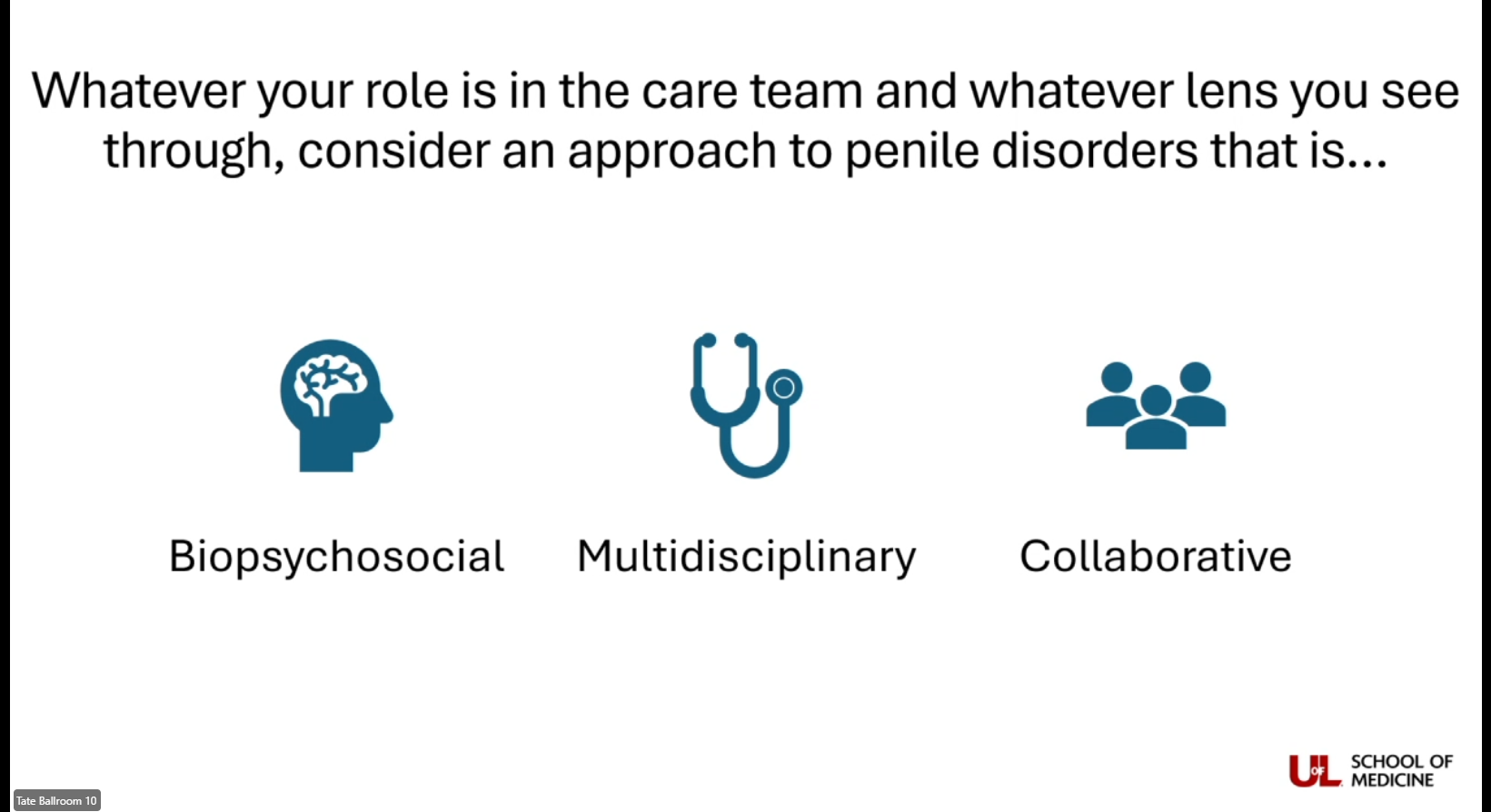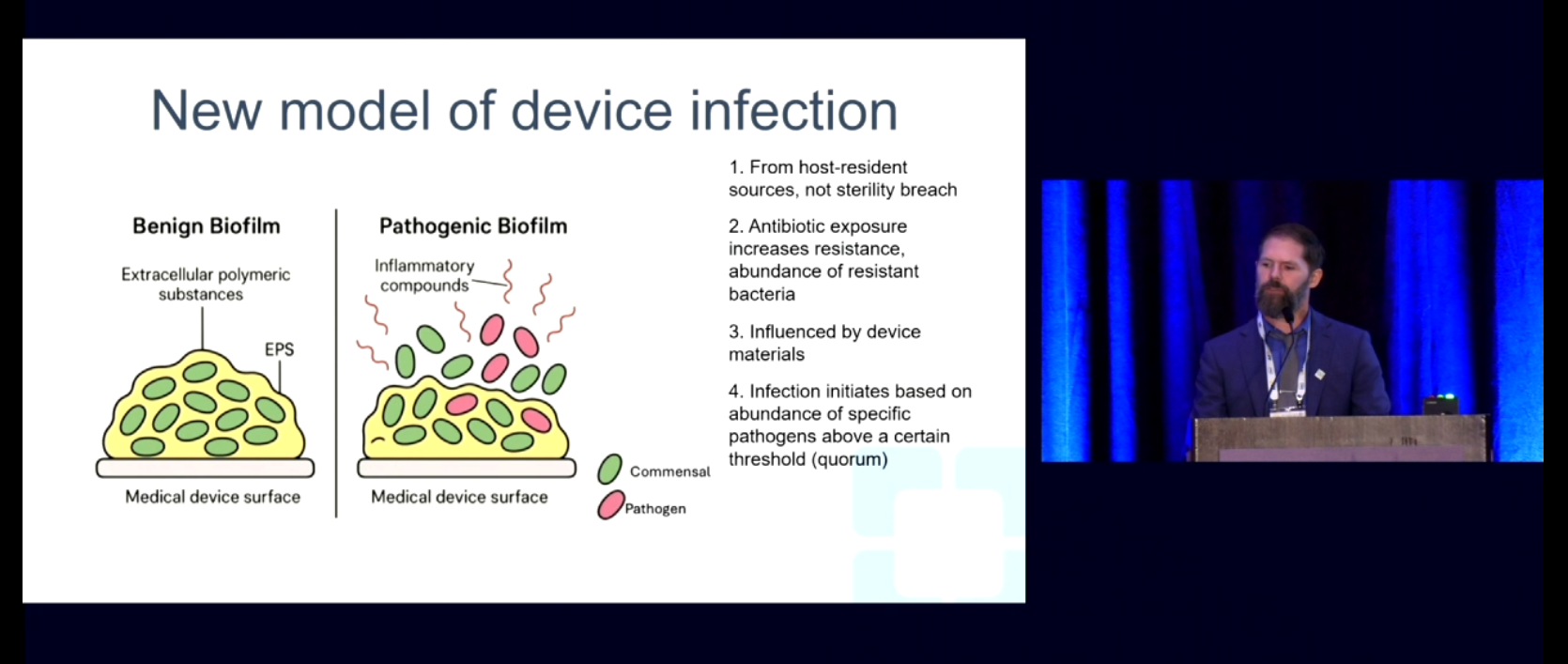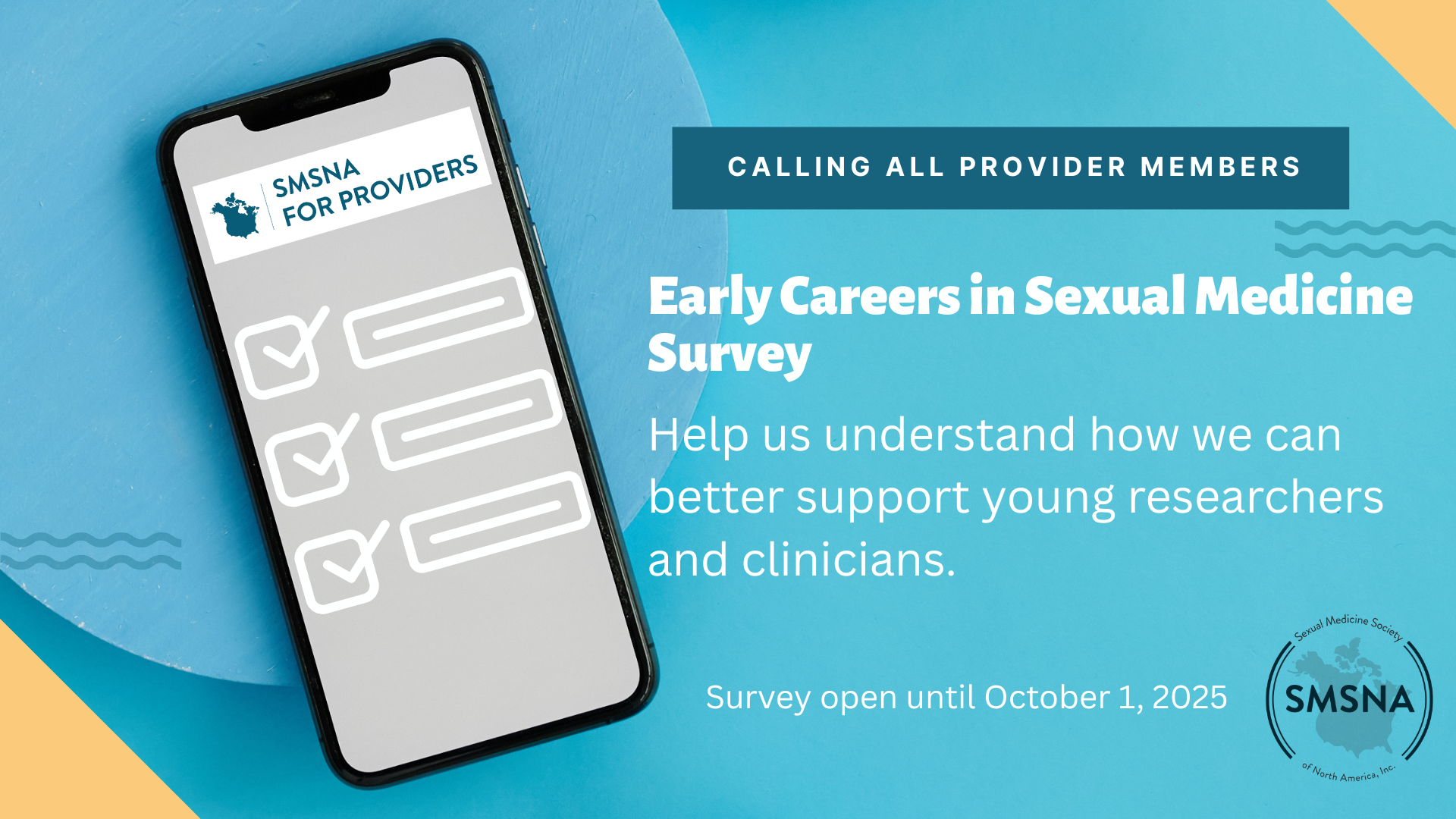All Stories
Last week, the United States' Health and Human Services (HHS) and Food and Drug Administration (FDA) held a press conference to announce the removal of the black box warnings on estrogen-based hormone therapy, recognizing its safety when used appropriately. Members of the SMSNA, particularly those in the Female Sexual Function Committee, played an active role in advocating for this update.
At the second day of the 26th SMSNA Annual Fall Scientific Meeting, Drs. Jonathan Clavell-Hernandez, Martin Gross, and Robert J. Valenzuela, discussed strategies for counseling patients to improve post-implant satisfaction. Their focus included managing second-opinion consultations, addressing concerns about infection risk, and setting expectations around girth and length restoration.
For patients seeking a second opinion after an initial implant, Dr. Clavell-Hernandez emphasized the importance of validating the patient’s emotions; such as anxiety, embarrassment, disappointment, sadness, or anger about the outcome of their procedure. He advised clinicians to clearly explain what aspects can and cannot be corrected and to set realistic expectations, reminding patients that complications are possible with any surgical procedure.
Dr. Gross addressed the increased risk of infection with revision surgeries, underscoring the need to communicate this risk clearly and calmly. He emphasizedthat all implanted devices carry some risk of infection and encouraged providers to explain the level of risk specific to the patient's case, along with available options for managing post-operative infections. He also reminded surgeons that the responsibility for infection prevention lies primarily with them.
Dr. Valenzuela highlighted the importance of involving patients throughout the pre- and post-operative process to increase satisfaction. Key points from his talk included introducing vacuum erection and traction devices before surgery, establishing post-operative protocols early, discussing desired outcomes, and evaluating whether additional surgical maneuvers are necessary. These may include cavernosal sparing, adjunct soft tissue techniques, advanced tunical lengthening, and addressing glans hypermobility.
Collectively, all three speakers emphasized the importance of clear, honest communication, setting realistic expectations, and working collaboratively with patients to achieve optimal post-operative outcomes.
At the second day of the 26th SMSNA Annual Fall Scientific Meeting, Dr. Jessica Yih highlighted important considerations regarding male and female sexual dysfunction as barriers to conception. Erectile dysfunction (ED) is common in males seeking care for infertility, while dyspareunia, or pain during intercourse, is frequently observed in females undergoing fertility treatment. Dr. Yih suggests that these issues are often linked to the heightened anxiety surrounding fertility and family planning.
Clinicians and fertility specialists should evaluate both partners. For the female partner, a thorough pelvic and vulvar examination is recommended, with specific attention to the vestibule and pelvic floor tension, as these may be sources of pain. The most common causes of dyspareunia include vaginismus (involuntary clenching of the pelvic and surrounding muscles), provoked vestibulodynia (pain at the vestibule upon touch), pelvic floor muscle dysfunction, and endometriosis. The male partner should undergo a standard ED workup, including semen analysis, hormone testing, and related evaluations.
When sexual dysfunction is present, fertility treatment should begin with addressing the dysfunction itself. For female partners, treatment options may include pelvic floor physical therapy, vaginal dilator therapy, and botulinum toxin injections. Additionally, Dr. Yih recommends home insemination kits as an alternative when penetrative intercourse is difficult. She also advises that female patients consider not disclosing their fertility window to their partner, as doing so may increase pressure and anxiety for both individuals.
Ultimately, Dr. Yih emphasizes a multidisciplinary, couple-centered approach that acknowledges and addresses these significant yet often underrecognized aspects of sexual dysfunction in the context of fertility care.
At the second day of the 26th SMSNA Annual Fall Scientific Meeting, Dr. Bradley Gill provided an overview of current office-based, minimally invasive surgical therapies for benign prostatic hyperplasia (BPH), as supported by AUA guidelines.
Most approaches are tailored to prostate size, and patient goals related to sexual function and fertility should also be considered. Dr. Gill emphasized one key phrase: “matching the right procedure to the right prostate and the right patient,” noting that not all BPH treatments and patients are created equal. Diagnosis should include ultrasound or CT scans, along with urodynamic tests when necessary.
Depending on the size of the patient's prostate and their individual goals, consider the following in-office treatments if the patient is comfortable with them: implantable temporary nitinol devices, UroLift, water vapor thermal therapy, and drug-coated balloon dilation. However, providers should be mindful of AUA-specific indications for each therapy.
At the second day of the 26th SMSNA Annual Fall Scientific Meeting, Dr. Brian Willoughby shared his research on pornography and its influence on mental health, along with his thoughts on the future of pornography.
Most research shows that pornography use peaks in young adulthood and declines with age, and that nearly twice as many men as women consume pornography. Other studies report that around half of surveyed couples use pornography together.
Dr. Willoughby discussed how the frequency of pornography consumption can affect mental health and relationships. More frequent use is associated with increasingly negative views toward sexual activity and partnerships. However, he noted an important caveat: the content and nature of the pornography consumed may contribute to more severe mental health outcomes. Generally speaking, there are few instances of compulsive sexual behavior such as this, which may involve more violent content and behaviors.
According to Dr. Willoughby, the future of pornography appears to be moving toward AI and deepfakes, which may have a greater impact on relationships and mental health, particularly depression and anxiety, than traditional pornography. Deepfakes allow for customized content with the face of a desired sexual partner, and AI companions are customizable in terms of personality and design, potentially making it more difficult for individuals to feel fully satisfied with real-life romantic partners.
At the first day of the 26th SMSNA Annual Fall Scientific Meeting, Dr. Eliza Burr discussed the effects of GLP-1 and GLP-1/GIP receptor agonists on female sexual function, and in respect to age group in two subsequent studies.
Dr. Burr’s first study revealed that a quarter of participants reported changes in sexual function, with half of those reports experiencing a distressing decrease in sexuaal function. Specifically, the results showed a statistically significant decrease in the domains of desire and arousal.
The second study revealed significant decreases in sexual function in the 31–40-year-old age group, with fewer reports of sexual dysfunction as age increased. This trend appears to correlate with hormonal changes across pre-, peri-, and postmenopausal groups. Given that the decrease in sexual function was consistent across age groups in women taking GLP-1 and GLP-1/GIP receptor agonists, Dr. Burr posits that this may indicate a baseline level of sexual function among women on these medications.
Dr. Burr recommends further and more rigorous research into the effects of GLP-1 and GLP-1/GIP receptor agonists on female sexual function, as current findings remain inconsistent.
At the first day of the 26th Annual Fall Scientific Meeting, Dr. Jessica Schardein discussed penile disorders in male non-cancer patients through a biopsychosocial lens, emphasizing the importance of multidisciplinary collaboration between clinicians and mental health professionals.
Depression, anxiety, and relationship conflicts may be primary or secondary contributors to erectile dysfunction, and can affect treatment outcomes for multiple disorders. Dr. Schardein emphasizes that approaches targeting both the mind and body may increase the likelihood of treatment success, combining medication and sexual health-specific therapy.
Diagnostic guildelines often include direction for reffering patients to mental health professionals based on the level of distress the patient is experiencing due to erectile dysfunction, Peyronie’s disease, or other conditions. However, Dr. Schardein recommends that all patients with sexual dysfunction are referred to a mental health professional, as this may help reduce distress and support better treatment adherence.
While there is a benefit to discussing treatment in therapy, Dr. Schardein emphasizes four main points to remember: recognize loss, give space for grief, identify strengths, and help patients reframe negative thinking.
At the first day of the 26th SMSNA Annual Fall Scientific Meeting, Dr. Aaron Miller briefly discussed the implications of biofilms on implantable medical devices.
Dr. Miller's research discovered that the origin of infectious biofilms was found to come from the host, as the subcutaneous tissue's biofilm was identical to the device's biofilm. This points to an obstacle in infection prevention: the influence of the patient's microbiome.
Comparing device materials, Dr. Miller found that bacterial count was influenced by the device manufacturer and the material used, with titanium offering the lowest risk of bacterial growth. Antibiotic use increased the abundance of known pathogens, leading to an increased risk of infection. Moving away from broad-spectrum antibiotics and creating patient-specific combinations may be useful in the future.
With further research and development, Dr. Miller believes the introduction of new materials and quorum-sensing inhibitors may be beneficial in reducing the risk of infections with implantable medical devices.
Pelvic floor muscles (PFM) have a distinct connection to female sexual dysfunction (FSD). Because PFMs surround the female reproductive organs, they play a large part in FSD like dyspareunia, vulvodynia, vestibulodynia, and more. Weak PFMs may lead to a feeling of looseness in the vagina and may contribute toward pelvic organ prolapse (POP), where the pelvic organs begin to fall out through the vagina. Additionally, PFMs being too strong or tight may contribute toward pelvic and vaginal pain disorders.
You may also be interested in...
Other Popular Articles

What Is Jelqing, and Does It Actually Work?
The term “jelqing” refers to a set of penis stretching exercises that some believe can make the penis bigger. Although the practice has gained attention and popularity in blogs and internet forums in recent years, there is no scientific evidence that it is an effective way to permanently increase the size of one’s penis. In fact, in some cases, jelqing may actually cause damage to the penis, so it is a good idea to get all the facts before setting off to try it.

What Is the Average Penis Size?
If you have ever wondered how your penis compares to others in terms of size, you are not alone. Many men are curious to know how their penises stack up compared to the average. Unfortunately, general curiosity can sometimes give way to full-on obsession and anxiety about penis size. This can be an unhealthy and often unnecessary fixation, especially because most men who think their penises are too small have perfectly normal-sized penises.

What Is Sensate Focus and How Does It Work?
Sensate focus is a technique used to improve intimacy and communication between partners around sex, reduce sexual performance anxiety, and shift away from ingrained, goal-oriented sexual patterns that may not be serving a couple.

Can Sex Reduce Menstrual Cramps?
The SMSNA periodically receives and publishes ‘guest editorials.’ The current article was submitted by Mia Barnes, a freelance writer and researcher who specializes in women's health, wellness, and healthy living. She is the Founder and Editor-in-Chief of Body+Mind Magazine.
Having sex while you experience menstrual cramps is healthy and can provide significant benefits. While it might not be the first activity that comes to mind when your PMS or period cramping begins, many people enjoy sex to reduce menstrual cramps, experience increased pleasure and benefit from other advantages. Learn more about having sex while menstrual cramps are happening and how it can help your body.

How Long Does It Take the Average Man to Ejaculate?
On average, it takes a man between 5 to 7 minutes to orgasm and ejaculate during sexual intercourse.

The Effect of Regular Aerobic Exercise on Erectile Function
Erectile dysfunction (ED) is the inability to achieve or maintain an erection sufficient for satisfactory sexual activity. As men get older, their erectile functioning may naturally decline due to changes in testosterone levels, cardiovascular functioning, and the potential development of other chronic medical conditions that become more common with age.
You are prohibited from using or uploading content you accessed through this website into external applications, bots, software, or websites, including those using artificial intelligence technologies and infrastructure, including deep learning, machine learning and large language models and generative AI.





